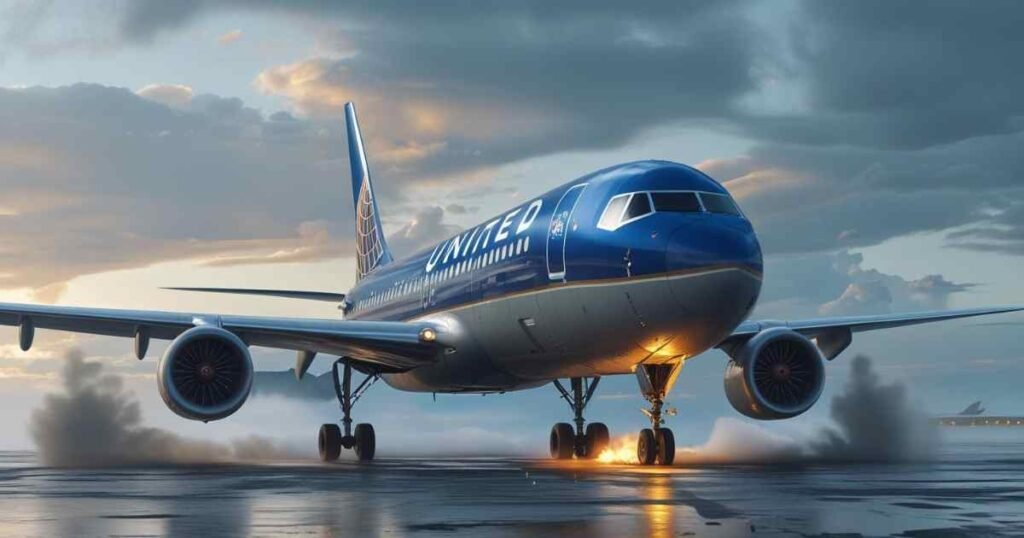Introduction
Imagine a smooth, routine transatlantic journey suddenly interrupted—not by turbulence or weather, but by an unforeseen alarm high above. That’s exactly what happened when United Airlines Flight UA770 emergency diversion sprang into motion. In a heart-pounding moment, the flight crew issued a Squawk 7700 and redirected the aircraft to London Heathrow. This wasn’t chaos—it was controlled, swift, and essential for everyone’s safety. The following deep dive uncovers how this moment shaped flight safety in unexpected ways.
What Is an Emergency Diversion?
An emergency diversion occurs when a flight must deviate from its course due to urgent safety concerns—mechanical faults, medical emergencies, or other in-flight anomalies. In the case of United Airlines Flight UA770 emergency diversion, the crew detected a critical issue mid-air and acted within seconds to reroute for safety.
Origin and Philosophical Foundation
Emergency diversion protocols stem from a core aviation philosophy: safety above schedule. It’s the product of decades of lessons learned, from early flight planning to modern redundant systems. The Safety First ethos ensures that when anomalies emerge, deviation is decisive—not risky.
The Story Behind United Airlines Flight UA770 Emergency Diversion
- Flight context: UA770 took off from Barcelona bound for Chicago aboard a Boeing 787-9 Dreamliner. Roughly two hours into the flight, the aircraft issued a Squawk 7700 signal—declaring a general emergency—and diverted to London Heathrow.
- Trigger details: Investigations suggest the emergency stemmed from a technical issue, possibly cabin pressurization or a mechanical malfunction.
- Why Heathrow? With its infrastructure and being a United Airlines hub, Heathrow provided an optimal landing site for the diverted flight.
- Technology in play: The Dreamliner’s flight-by-wire controls and health-management systems helped the crew safely steer through the emergency.
- Passenger reaction: Reports describe hushed cabins, tense eyes, and wide concern—until the captain’s calm voice reassured everyone.

Real-World Applications Beyond Aviation
In Artificial Intelligence
Emergency diversion mirrors AI’s “kill switch” protocols—rapid shutdowns when anomalies arise. All about preventing escalation before catastrophe.
In Business Strategy
When markets shift, companies may “divert” investments—like changing course mid-flight—to avert deep losses.
In Education
Educators sometimes pivot when teaching methods falter—like switching plans mid-lesson to better engage students.
How United Airlines Flight UA770 Emergency Diversion Differs from Standard Protocols
| Feature | Emergency Diversion (UA770) | Standard Flight Protocol |
|---|---|---|
| Trigger | Squawk 7700, technical alarm | Pre-planned schedule |
| Response Time | Immediate, urgent | Routine, scheduled |
| Objective | Mitigate immediate risk | Complete flight as planned |
| Crew Action | Intense coordination + calm updates | Routine operations |
| Passenger Experience | Tension balanced by crew composure | Predictable, low anxiety |
Future Implications: Ethics, Risks, Opportunities
Ethical Questions: Should crew always divert for minimal anomalies? Over-diversion could erode trust.
Risks: Frequent diversions disrupt logistics, inflate costs, and can tire crew and passengers.
Opportunities: Enhanced predictive diagnostics—using AI and sensor fusion—can foresee issues before they pose risks, reducing diversions like UA770’s.
Designing for Safe Diversions: Best Practices
- Early anomaly detection through advanced sensors and AI modeling.
- Crew training to balance technical fixes with passenger communication.
- Clear communication flow—loudspeaker clarity, calm tone, minimal jargon.
- Passenger care—vouchers, lodging, flight rebooking post-diversion.
- Debriefs & audits—review incident, revise protocols, share lessons industry-wide.
Conclusion: What UA770’s Emergency Diversion Teaches Us
United Airlines Flight UA770 emergency diversion wasn’t a breakdown—it was an exemplar of safety architecture in action. The aircraft soared not by avoiding risk, but by managing it efficiently. In that vital decision to change course mid-air, the essence of aviation’s human-technical cooperation soared brightest.
FAQs About United Airlines Flight UA770 emergency diversion
1. What does United Airlines Flight UA770 emergency diversion mean?
It’s when UA770 had to change its route mid-flight because of a safety issue.
2. Why did United Airlines Flight UA770 emergency diversion happen?
A technical glitch triggered the emergency signal, so the crew diverted to Heathrow, a safe airport.
3. Was everyone safe in United Airlines Flight UA770 emergency diversion?
Yes—no injuries. The landing was safe and orderly thanks to trained crew and aircraft systems.
4. Do diversions like United Airlines Flight UA770 emergency diversion happen often?
They’re rare but part of standard safety procedures. Crews train for such rare possibilities.
5. How can passengers prepare for situations like UA770’s emergency diversion?
Stay alert, listen to instructions, stay calm, and trust that every step is for your safety.










